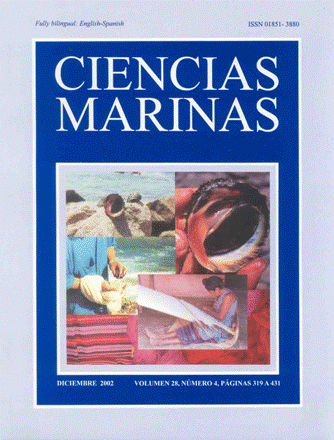Continental runoff of nutrients and their possible influence over stoichiometrical relations (DIN:P:Si) in the Northwest Mediterranean waters
Main Article Content
Abstract
The costal zone of the Northeastern Mediterranean (Catalan Sea) was divided along (North, Center and South) and across (Coastal, Middle and Far fields) to see the influence of the continental water runoff over the stoichiometric ratios Dissolved Inorganic Nitrogen (DIN):P:Si. The ratios N:P show that nitrogen acts in a great percentage as a potential limiting nutrient, pattern which is clearer in the middle field with more than 60% of the cases. In contrast, in the coastal field P could act as the potential limiting nutrient (40% approximately). A two-way ANOVA showed significant differences between effects 1 and 2 and their interaction, which means that along and across the study area the concentrations and the stoichiometric ratios were different among each other. When the three nutrients (N, P and Si) were considered, silicate acts as the potential limiting nutrient with more than 50% of the cases in most fields and zones, with percentages as high as 75% in the case of the central middle field. Assuming that the phosphate concentration is the unique source of P for the phytoplankton, we estimated that the "potential" primary productivity of the surface waters in the study zone is 32.6 µg Chla L–1 for the coastal field, 4.3 µg Chla L–1 for the middle field and 2.2 µg Chla L–1 for the far field, differences due to coastal eutrophication. We suggest that the nutrient runoff along the continental waters and/or the significant changes in the nutrient ratios induced by anthropogenic activities could favor the seasonal incidence of noxious algal blooms along the Catalan Coast.
Downloads
Article Details
This is an open access article distributed under a Creative Commons Attribution 4.0 License, which allows you to share and adapt the work, as long as you give appropriate credit to the original author(s) and the source, provide a link to the Creative Commons license, and indicate if changes were made. Figures, tables and other elements in the article are included in the article’s CC BY 4.0 license, unless otherwise indicated. The journal title is protected by copyrights and not subject to this license. Full license deed can be viewed here.

